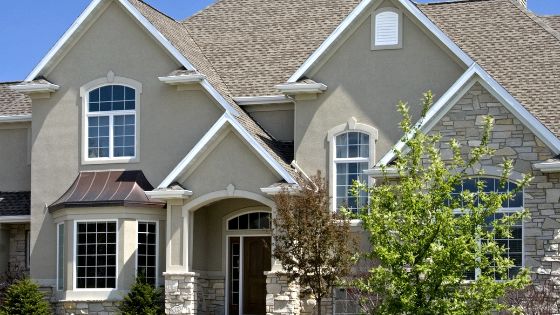After buying a home, preventing water damage suddenly becomes a top priority. Otherwise, your investment could be damaged, decreasing its overall value. Water should only be in pipes, sinks, drains, and basins, or it can do a number on a home. Luckily, there are numerous simple repairs available to lessen the odds of any damage.
Maintain Your Home’s Downspouts
Water damage is not always the result of catastrophic events like hurricanes. Gutters can overflow if the downspouts are not clean, so homeowners must inspect them. If it has not rained recently, try running some water through them yourself. Make sure the water flows at least two feet away from home, and if it does not, you may install an extension. Occasionally, a downspout ends with a perpendicular segment, pushing water against the foundation. It can erode the soil nearby, leading to long-term damage if that happens.

Repair Any Damaged or Missing Caulk
Leaky doors and windows are common sources of water damage, but they are simple to fix. Just pick up a tub of exterior-grade caulking and address the leaks before they develop. Circle your home’s exterior perimeter while the sun is out and look for any cracked or missing caulk. Additional caulk should be applied to the window casing, particularly near the top. Likewise, extra caulk should be put anywhere there is a gap, as any missing caulk is a problem. Look around inside for signs of leakage, such as mould spots or bubbled paint. These signal spots where water has been leaking, so you should check for them thoroughly.
Ensure the Home’s Roofing Is in Good Condition
Using a ladder, climb on the roof and check for loose or broken shingles. A weather-proof roof is the only guaranteed protection against weather-related water damage. Even a minor leak can be serious, creating significant repair costs. However, finding and repairing loose shingles is not too difficult as long as you own a ladder. Once you have made it up there, walk along carefully and look for signs of loose asphalt. If spotted, you may want to hire a professional to replace the roof, but you should address it.
Re-grade Soil Surrounding Your Home
Use a level to measure the soil’s grade around your home and make sure it declines by 5% for the first 10 feet. Usually, the soil should be inclined as it approaches the foundation wall. If the soil’s height does not increase, it could create pools of water, seeping into the basement. Luckily, it is not hard to re-grade the soil using a rake and shovel. Dig up some dirt, push it into a slope, and extend it as far as possible. In addition, you should pack the soil down, encouraging water to stay on top.
Look at Flashing on the Roof
Homeowners should know that they can call for help with water damage restoration in Denver after storms. In many cases, these house calls are regarding issues with chimneys and flashing. Flashing protects the spot between the shingles and a chimney on the roof. If these are moved, water can seep into the cracks, causing major damage. Inspect the chimney flashing yourself to see if there is any noticeable separation. Contact a qualified mason if you spot anything amiss when you are finished.
Check Your Drains for Leaks
Sometimes, water leaks happen inside your house, typically under sinks and drains. Consequently, inspecting these items is crucial, so do it several times a year. If you notice a P-trap is leaking, repair or replace it. Furthermore, your daily activities can damage these contraptions, so be careful with them. Do not pour tons of hot, oily grease down the drain. Likewise, make sure a filter has been placed in the kitchen and tub drains.
Inspect the House’s Sump Pump
Most home’s sump pumps are found in either the basement or crawl space. Normally, these are a home’s last defence if water has worked its way inside, pumping it out and away. Nevertheless, a sump pump may be disconnected from the home’s GFCI outlets, which will not work.
Preventing Water Damage After Buying a Home
The average water damage claim costs almost $7,000, causing quite an inconvenience. Nevertheless, most of these claims can be prevented with proper precautions. You want to do everything possible to fix potential leaks before it becomes a problem.
